MMPI test has 550 questions; any similar test may be computerized.
MMPI scales 1-4 used for control, next 10 coefficients are clinical scales: hypochondria, depression, hysteria, psychopathy, paranoia, schizophrenia etc. | 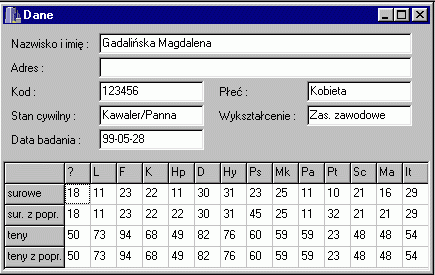 |
Display scales in a “psychogram”, interpreted by skilled psychologists diagnosing specific problems; show rules that are true for this case. Rules are derived from data collected in the Academic Psychological Clinic of Nicolaus Copernicus University and in several psychiatric hospitals around Poland. | 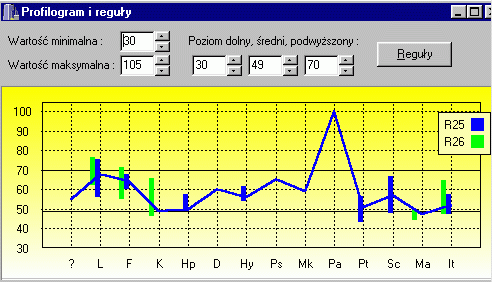
|
Two datasets used, woman and man, over 1600 cases each, 27 classes (normal, neurotic, drug addicts, schizophrenic, psychopaths, organic problems, malingerers, persons with criminal tendencies etc.).
2-3 rules per class found, a total of 50-100 rules.
Analyze how each rule fits to the case; vary uncertainty of input measurement (optimal uncertainty has been calculated by minimization of generalization error). | 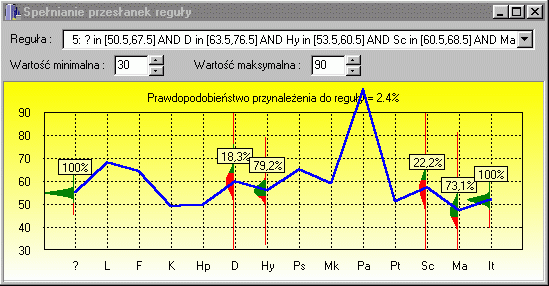
|
Show probabilities of different diagnoses, graph their dependence on the uncertainity of inputs. | 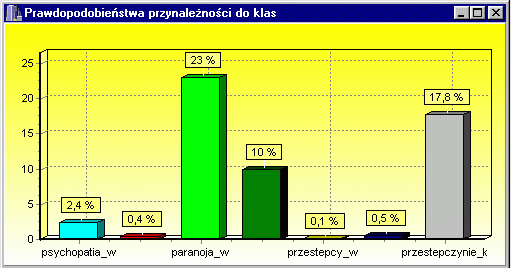
|
Show verbal interpretation of cases and rules. | 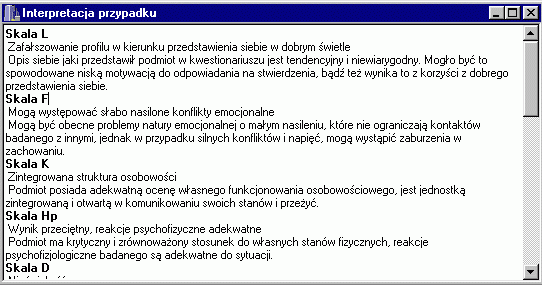
|
If probability of new classes quickly grows with the assumed uncertainty of the measurement analyze probabilistic confidence levels. | 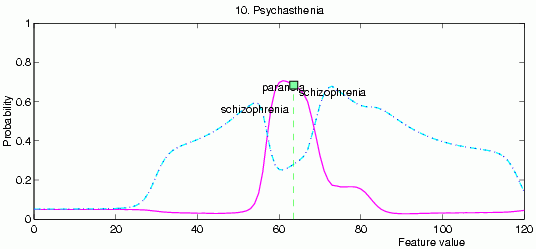
|